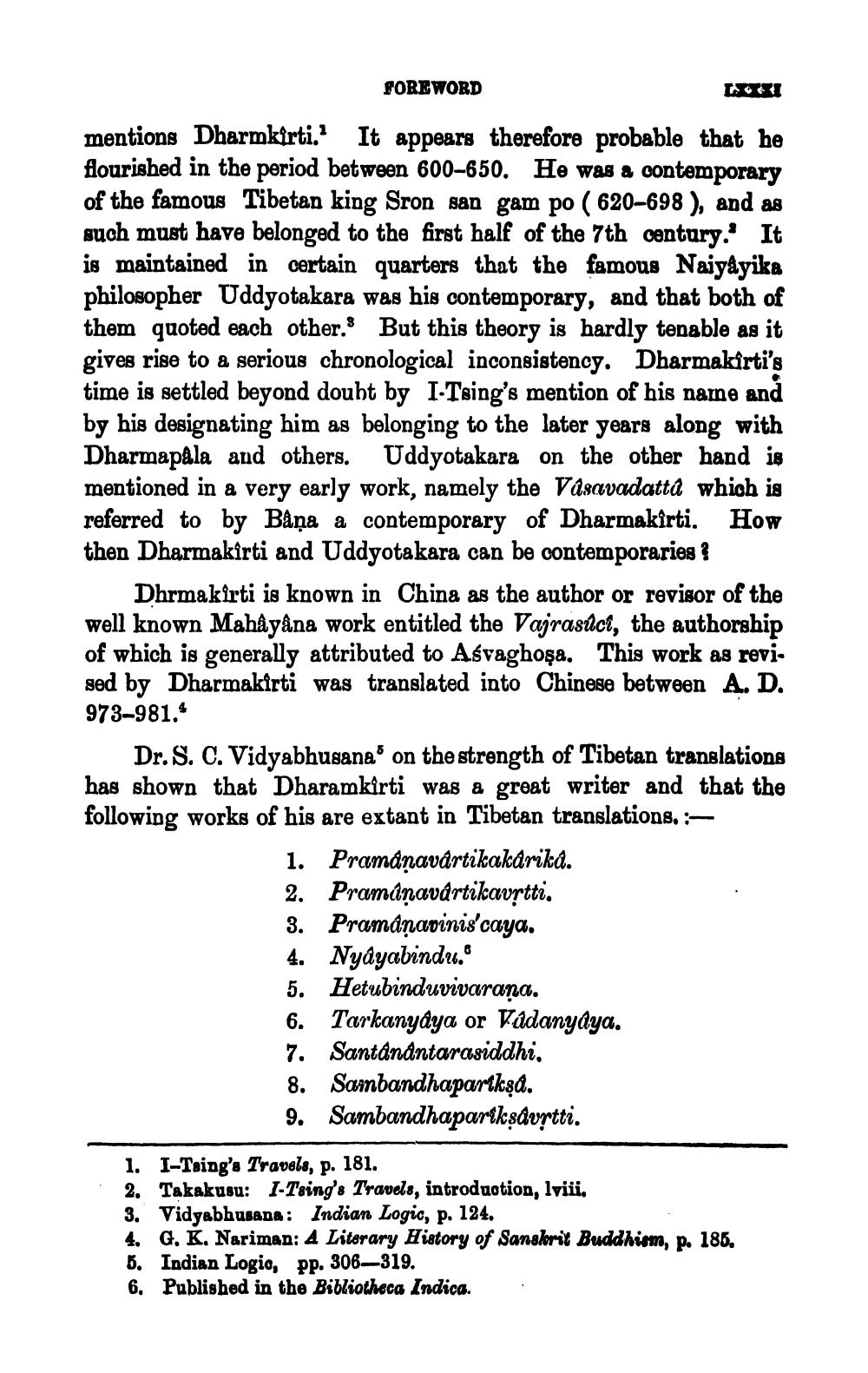________________
FOREWORD
mentions Dharmkirti. It appears therefore probable that he flourished in the period between 600-650. He was a contemporary of the famous Tibetan king Sron san gam po ( 620-698 ), and as such must have belonged to the first half of the 7th century.' It is maintained in certain quarters that the famous Naiyáyika philosopher Uddyotakara was his contemporary, and that both of them quoted each other. But this theory is hardly tenable as it gives rise to a serious chronological inconsistency. Dharmakirti's time is settled beyond doubt by I-Tsing's mention of his name and by his designating him as belonging to the later years along with Dharmapala and others. Uddyotakara on the other hand is mentioned in a very early work, namely the Vasavadatta which is referred to by Båņa a contemporary of Dharmakirti. How then Dharmakirti and Uddyotakara can be contemporaries ?
Dhrmakirti is known in China as the author or revisor of the well known Mahåyåna work entitled the Vajrasúct, the authorship of which is generally attributed to Asvaghoşa. This work as revi. sed by Dharmakirti was translated into Chinese between A. D. 973-981.
Dr. S. C. Vidyabhusana' on the strength of Tibetan translations has shown that Dharamkirti was a great writer and that the following works of his are extant in Tibetan translations. :
1. Pramânavārtikakärikā. 2. Pramáņavārtikavrtti. 3. Pramanaoinis'caya. 4. Nyayabindu. 5. Hetubinduvivarana. 6. Tarkanydya or Vádanyaya. 7. Santanántarasiddhi. 8. Sambandhaparikşd. 9. Sambandhapariksdvrtti.
1. I-Tsing's Travels, p. 181. 2. Takakusu: 1-Tsing's Travels, introduction, lviii. 3. Vidyabhusana: Indian Logic, p. 124. 4. G. K. Nariman: A Literary History of Sanskrit Buddhism, p. 186. 5. Indian Logio, pp. 306-319. 6. Published in the Bibliotheca Indica.




